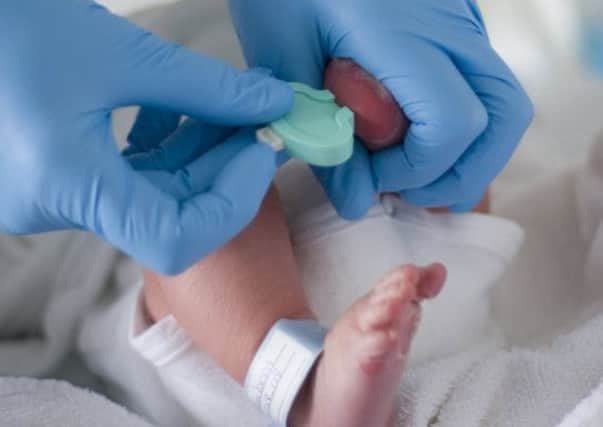Scots research could help detect baby infections


A team at Edinburgh University were able to detect and decode a signal generated from a baby’s DNA that can tell whether or not a bacterial infection is present in the bloodstream.
Researchers hope the findings could help develop a test for bacterial infection in newborns using a single drop of blood.
Advertisement
Hide AdAdvertisement
Hide AdImmediate detection of infections such as sepsis, where the immune system responds to an infection by attacking the body’s own organs and tissues, is currently not possible due to the lack of a simple test to spot them early on.
The scientists, whose work is published in the journal Nature Communications, believe accurately diagnosing infections could limit overuse of antibiotics in babies, which can lead to drug resistance.
The Edinburgh team identified a signal in babies’ blood consisting of 52 molecular characters that highlighted the presence of a bacterial infection. After spending the past decade trying to unravel the complexities of blood poisoning and its treatment in babies, the researchers said this signal provided critical and immediate information on the infection.
They used blood samples from newborn babies in Edinburgh to investigate thousands of signals written in biological code, known as “messenger RNAs”. The scientists were able to decipher with close to 100 per cent accuracy the signals generated by an infant’s genome that specifically showed that they were suffering from sepsis.
Diagnosing the condition in newborns is extremely difficult as signs of infection may not occur and, if they do, could be due to something other than an infection.
The most reliable way to detect infection currently is by finding bacteria in the blood, but this requires a relatively large volume of blood. By being able to detect infections with a much smaller amount, researchers hope treatment can be improved.
Professor Peter Ghazal, professor of molecular genetics and biomedicine at Edinburgh University, said: “A baby’s genome produces short messages that produce code information to communicate with the infant’s immune and metabolic systems so that it can fight the infection.
“The 52-character message that we have identified appears to be specific for bacterial but not viral infection.”
Advertisement
Hide AdAdvertisement
Hide AdDr Claire Smith, a consultant neonatologist at the Simpson Centre for Reproductive Health at Edinburgh Royal Infirmary, said: “Infection is responsible for a significant proportion of neonatal deaths worldwide, and also increases the risk of long-term disability in survivors.
“There is a pressing clinical need for more accurate and rapid testing for neonatal infection than is currently available.
“This work is enabling us to move towards being able to distinguish between babies who need urgent treatment, and those who are not infected and don’t require antibiotics.”